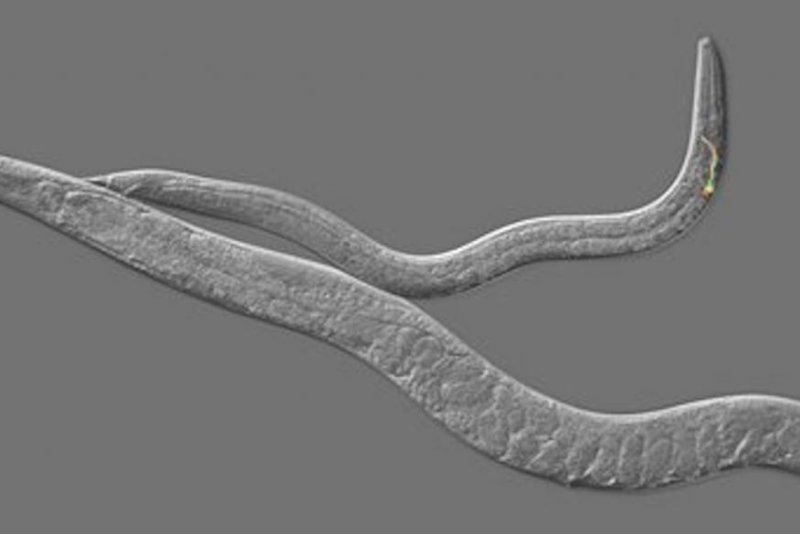Roundworms are regularly used as a model for understanding more complex biological systems -- like the genetic mechanisms behind the timing of puberty in humans. Photo by University of Rochester
July 3 (UPI) -- A new analysis of roundworm genetics has offered scientists fresh insights into the timing of puberty in humans.
In addition to physical and sexual maturation, the juvenile-to-adult transition also entails neurological changes -- changes that leave young adults vulnerable to neuropsychiatric disorders. Researchers hope their latest findings, published this week in the journal eLife, could offer scientists an improved understanding of mental health.
To better understand the timing of the juvenile-to-adult transition, scientists began tweaking the genome of the microscopic roundworm C. elegans. The experiments revealed the importance of a long non-coding RNA to sex-specific body shape and behavioral changes, as well as the maturation of neural circuits.
When scientists disrupted the expression of the non-coding RNA in roundworms, they observed a delay in the juvenile-to-adult transition phase.
Unlike most genes, the non-coding RNA identified by scientists does not synthesize a protein. Instead the RNA interacts directly with another pair of roundworm genes, LIN-28 and LEP-2.
Previous studies suggest the genes LIN-28 and MKRN3 play an important role in human puberty. The roundworm gene LEP-2 is similar to the human gene MKRN3.
The new molecular mechanism involving the unique non-coding RNA and the LIN-28 and LEP-2 genes, could help scientists better understand the genetic origins of the neurological changes accompanying the juvenile-to-adult transition in humans.
Researchers determined the new mechanism intercedes in the nervous system's timing directly.
"The waves of activity occur inside the nervous system itself, rather than in a tissue that sends signals to the nervous system," researchers wrote. "Moreover, they occur independently inside many different neurons. Each neuron thus has its own molecular clock for keeping track of development."
"Continued studies of the mechanisms identified in these studies will help scientists better understand the ways in which genetic and environmental cues regulate the transition to adulthood in humans," scientists wrote in a news release.















